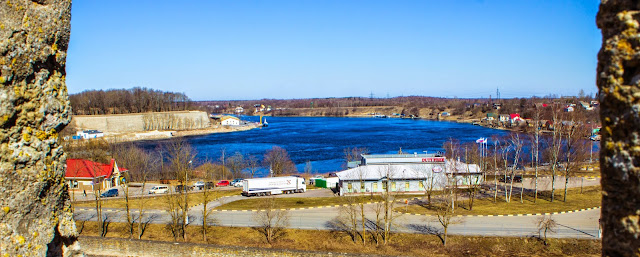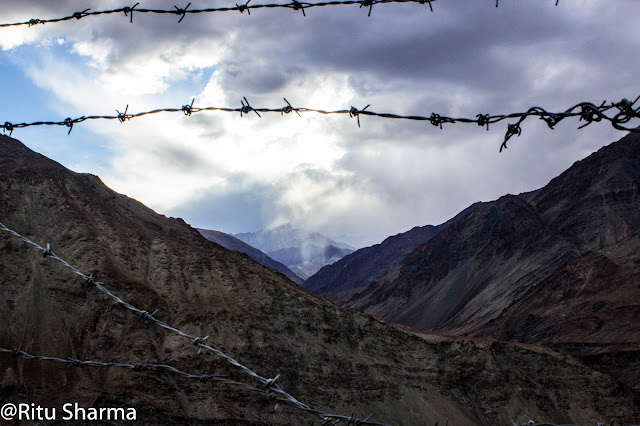Russia-Estonia Border: Tale of Two Cities divided by Border
The two cities speak the same language and have had a shared history.
But fate threw them on different sides of the border. For Narva and Ivangorod –
small towns in Estonia and Russia respectively- the history has been strongly
tied to each other as both were part of the erstwhile Soviet Empire. But after
Soviet disintegration in 1991 they have been going through different narratives
spawned by their respective governments and still maintain sanity in their
approach towards each other.
It was for the first time that I crossed a border by foot.
Crossing the bridge between Ivangorod and Narva immediately brought the analogy
of the border between India and Pakistan (which I have never been able to cross
over) in my mind; or if we narrow it down further – that of Indian Occupied
Kashmir and Pakistan Occupied Kashmir. Having cross border ties between
families, the two cities have not cut down the people to people contact. The
socio-economic cooperation is still going strong. This is in complete contrary
to India and Pakistan cross border cooperation and beneficial to both sides,
the two countries driven by their respective narratives do not want to budge at
all. Here is an insight into the cross border cooperation happening in Narva
and Ivangorod; and what it takes to be pragmatic in cross border cooperation.
 |
| Bridge linking the two towns |
Both the towns were destroyed during the World War II and
only three people were left alive. Both the towns were re-developed. They got
separated in 1991 when Estonia – one of the Baltic States – left the USSR.
Families got divided. So much so, Narva still has more than 80 percent of
Russian speakers and only 4 percent speak Estonian language. The number of
Estonian passport holders in the city is around 46 percent, those with Russian passport
form 36 percent of the population and the rest are stateless (There are many
who have chosen not to accept any citizenship. To become Estonian citizen one
need to pass a language test, a daunting task for many of the old people living
in the city.).
The two countries continue to engage in war of words, with
Russia alleging mistreatment of Russian ethnics at the hands of the Estonian
government, Estonia portray the USSR as the occupier of their country. Choosing
language as the basis of citizenship stems from its quest to differentiate
itself from its larger neighbour. The collective memory in the nationalising
state is shaped to consider Russia as an enemy. Despite the gulf between the two
countries, cooperation at social level continues between two towns.
In this backdrop, are set the relations between Ivangorod and
Narva. For border they have a river. But the imposing security paraphernalia
like Indo-Pak border is conspicuous by its absence. People have relatives on
the other side and can easily visit them. Before 2000, they did not require
visa to go to the other side. Things became a bit difficult after Estonia
joined the European Union, but the flow of people to and fro is pretty strong. There have been incidents when the tourist guides have relied on their friendships with the border guards to sneak tourists visiting one side to the other side for sometime.
At social level and Municipal level they still cooperate. Speaking
of this the Mayor of Ivangorod, Shahrova Tatyana said: “The cross border
cooperation has been intensive and uninterrupted.” She was also born in Narva
and her parents moved to Ivangorod after 1991. Gestures like celebrating the
New Year together and one side giving big gifts to the first baby on the other
side. Both sides are rebuilding their historical fortresses on both sides to
boost tourism. There are people who live on one side of the border and go to
work on the other side.
The complex administrative structure on the Russian side
makes cooperation a bit difficult as border security is the federal subject and
border cooperation falls under the ambit of municipal authorities.
Cut to India-Pakistan border – one of the most highly
controlled borders in the world having very non-liberalised visa policy. While
I can understand the animosity between the two countries, I cannot fathom the
ugly display of jingoism by the two sides. Shouting at the top of their voices,
lifting their feet above their heads and virtually abusing each other- I really
do not comprehend what the two sides portray to the thousands of tourists
thronging the stands to witness the spectacle. Cross border trade and travel
are highly restricted. The two countries barter 21 items, mainly vegetables and
fruit across the Line of Control (the de-facto border between the
Pakistan-Occupied Kashmir and the Indian Kashmir).








Comments
Post a Comment